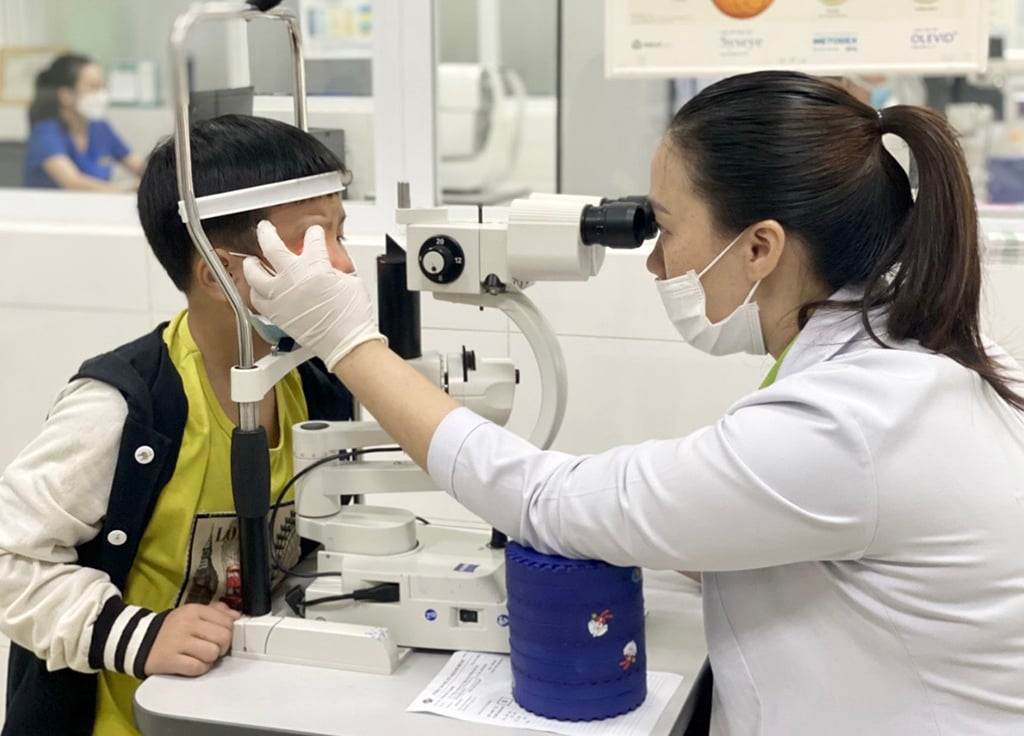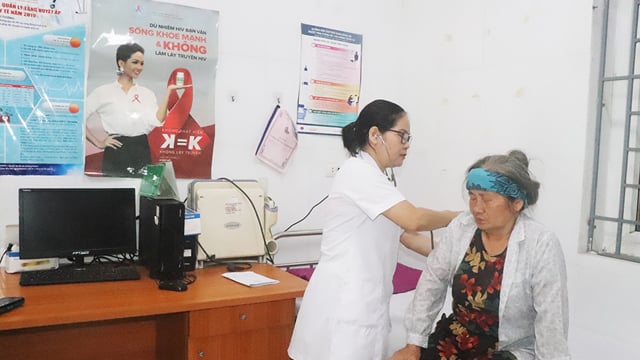This year's World Sight Day theme focuses on eye safety at work, alerting people to the importance of protecting their eyes at work, and calling on employers to prioritize eye care for workers anytime, anywhere.
Eye injuries are often accompanied by reduced vision or blindness. To prevent eye injuries, workers and employers should take four main measures: raise awareness of eye safety risks at work; eliminate the risk of injury when operating controls and machines, engines, etc.; wear appropriate eye protection; maintain eye protection carefully and replace it if it is damaged.

Vietnam estimates that nearly 3 million children have refractive errors.
Occupational accidents causing eye injuries account for more than one-third of all injuries. Of these, young men account for 96.3% (in this group, 89.1% of eye injuries occur at work, in the context of not wearing protective eyewear). Eye injuries can also occur at home due to household accidents.
According to the Central Eye Hospital, Vietnam currently has about 2 million blind people; about 1/3 of them have difficulty accessing treatment. Over 80% of blindness in Vietnam can be prevented and cured.
The main causes of blindness today through investigation show that cataract is still the main cause, accounting for 66%. Next are fundus diseases, glaucoma, refractive errors...
Notably, refractive errors (myopia, hyperopia, astigmatism) are increasingly common among adolescents, with an incidence of about 15 - 20% in rural students and 30 - 40% in urban students.
If we only count the group of children aged 6-15 (the age group that needs priority for glasses), the whole country has about 15 million children, with a rate of refractive errors of about 20%, then Vietnam estimates that nearly 3 million children have refractive errors that need glasses, of which up to 2/3 are nearsighted. Examining and providing glasses for children with refractive errors (nearsightedness, farsightedness, astigmatism) is one of the cheapest and most effective interventions to reduce the rate of blindness.
Source link





![[Photo] "Beauties" participate in the parade rehearsal at Bien Hoa airport](https://vstatic.vietnam.vn/vietnam/resource/IMAGE/2025/4/11/155502af3384431e918de0e2e585d13a)

![[Photo] Looking back at the impressive moments of the Vietnamese rescue team in Myanmar](https://vstatic.vietnam.vn/vietnam/resource/IMAGE/2025/4/11/5623ca902a934e19b604c718265249d0)
























![[Photo] Summary of parade practice in preparation for the April 30th celebration](https://vstatic.vietnam.vn/vietnam/resource/IMAGE/2025/4/11/78cfee0f2cc045b387ff1a4362b5950f)




























































Comment (0)